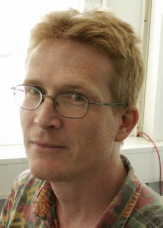
Ruhr-Universität Bochum
Lehrstuhl für Theoretische Chemie
Universitätsstraße 150
44780 Bochum
Germany
![]() 0234/3228082
0234/3228082
![]() 0234/3214045
0234/3214045
![]() christof.haettig@theochem.ruhr-uni-bochum.de
christof.haettig@theochem.ruhr-uni-bochum.de
www:
Homepage
PROJECTS
Development and
application of explicitly-correlated coupled-cluster methods
for nonlinear optical properties
and excited states
PRINCIPAL INVESTIGATOR
 |
Prof. Dr.
Christof Hättig Ruhr-Universität Bochum Lehrstuhl für Theoretische Chemie Universitätsstraße 150 |
TOGETHER WITH
 |
Prof. Dr.
Willem Maarten Klopper Universität Karlsruhe Institut für Physikalische Chemie Kaiserstraße 12 |
PROJECT RESEARCH ASSISTANT
ABSTRACT
Coupled-cluster (CC) response theory has during the last decade become a
standard approach for accurate calculations of optical properties. These are
presently the only methods allowing to calculate NLO properties of many-electron
systems with an accuracy of a few percent. As other correlated
wavefunction approaches, CC response methods are limited in their
applicability by the slow basis set convergence and the steep increase of the
computational costs with basis set size.
The goal of this project is to combine CC response theory with the R12
ansatz (and its F12 generalization) to overcome this problem and make
these methods applicable to larger molecules and increasing their accuracy.
During the previous application period we have implemented CC-R12
response theory at the level of the CCSD(R12) model. First results for
excited states and (hyper-) polarizabilities demonstrate a significant
acceleration of the basis set convergence for these properties with the R12
ansatz. The aim for the next application period will be to extend the
developed CCSD(R12) response code to the more accurate F12 variant,
which uses a modified correlation factor and a different projection operator
for the pair functions (so-called ansatz 2), to fully exploit the improved basis
set convergence of these newly devised explicitly-correlated methods.
Another objective will be the development of approximations to ansatz 2 to
reduce the computational costs of calculations for excited states with the
CC2-F12 model.